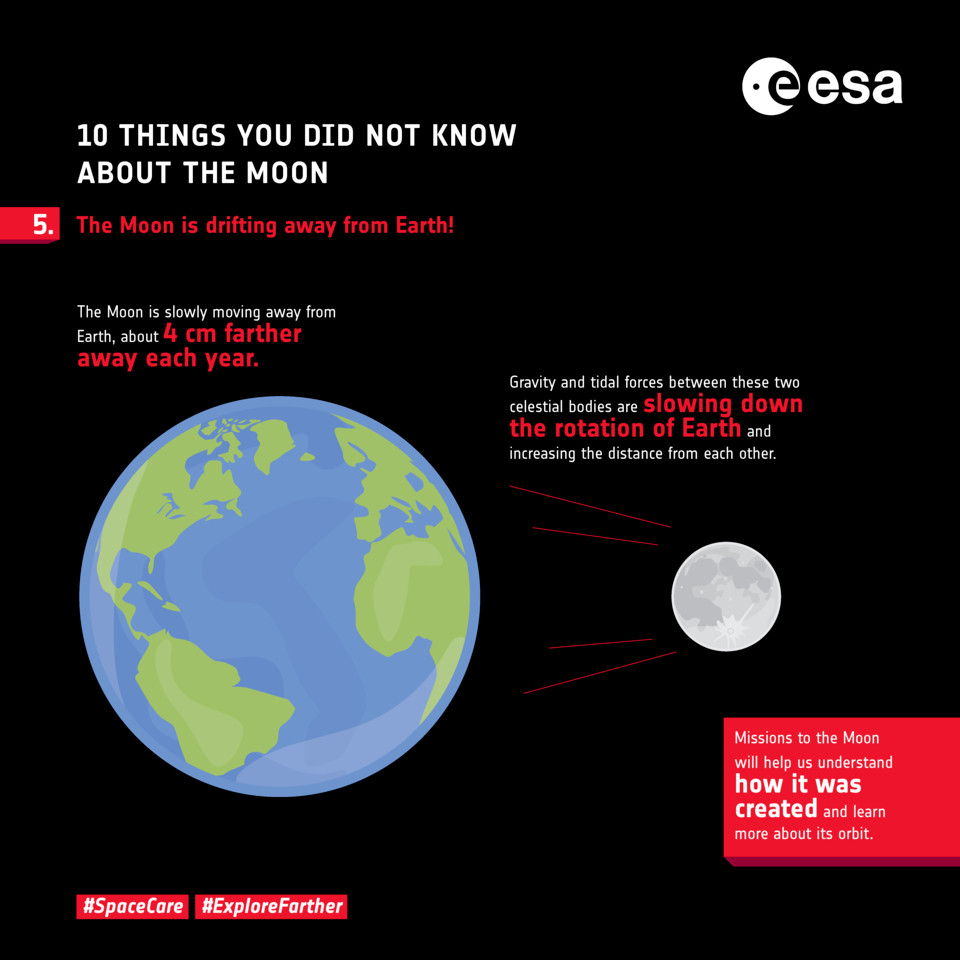5. The Moon is drifting away from Earth
The Moon is gradually drifting away from Earth at a rate of approximately 4 cm per year. This phenomenon is caused by the Moon pulling on Earth’s oceans creating tidal forces that produce a bulge of water on the side of Earth facing the Moon
The Moon is gradually drifting away from Earth at a rate of approximately 4 cm per year. This phenomenon is caused by the Moon pulling on Earth’s oceans creating tidal forces that produce a bulge of water on the side of Earth facing the Moon

Comments
The Atacama Desert, located in South America, is widely considered to be the driest place on Earth, outside of the Antarctic dry valleys. This vast expanse of land spans over 100 000 sq km and receives an average of less than 1 mm of rainfall per year
Earth’s magnetic north wanders. Until the early 1990s, the magnetic North Pole was known to lie some 1600 km south of true north, in Canada. Yet scientists realized that the location of magnetic north wasn’t fixed and was drifting at a rate of 15 km
Europe is known for its diverse cultures, rich history and stunning landmarks. Despite being the second smallest continent in size (after Australia)
The Tibetan Plateau is often referred to as the 'third pole' owing to the amount of freshwater it contains. With over 46 000 glaciers, the Tibetan Plateau holds the largest reserve of freshwater outside of the North and South Poles.
Trees are one of the most effective tools we have to combat climate change. Forests are home to around 80% of biodiversity on land and tropical forests alone produce over 40% of the oxygen we breathe.